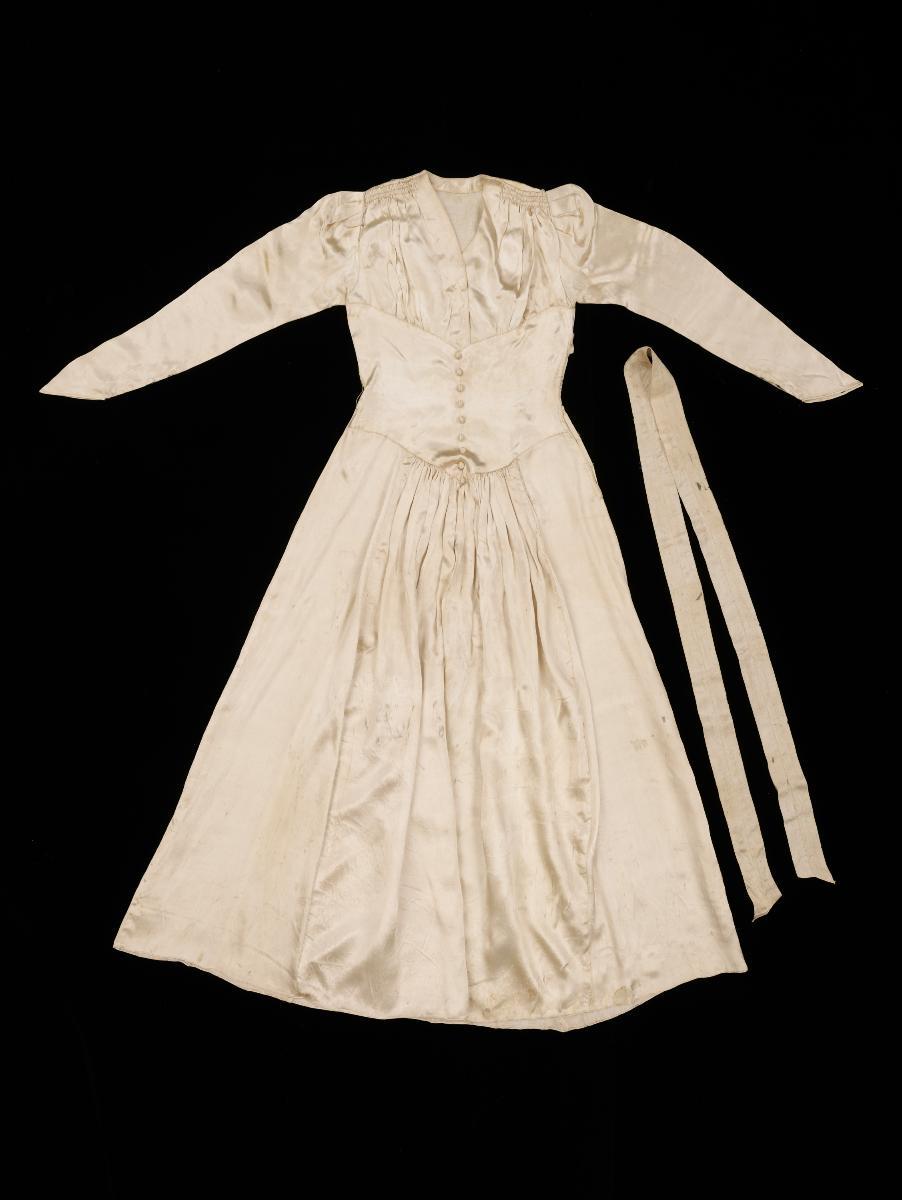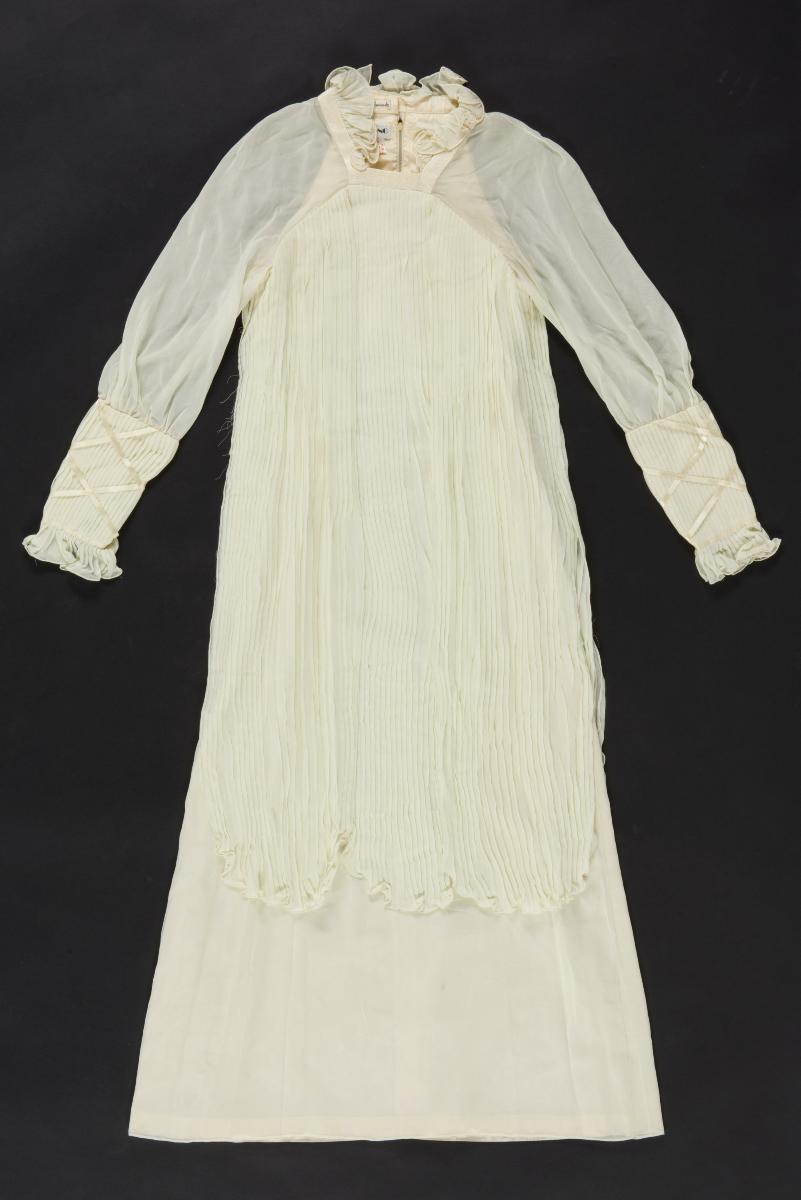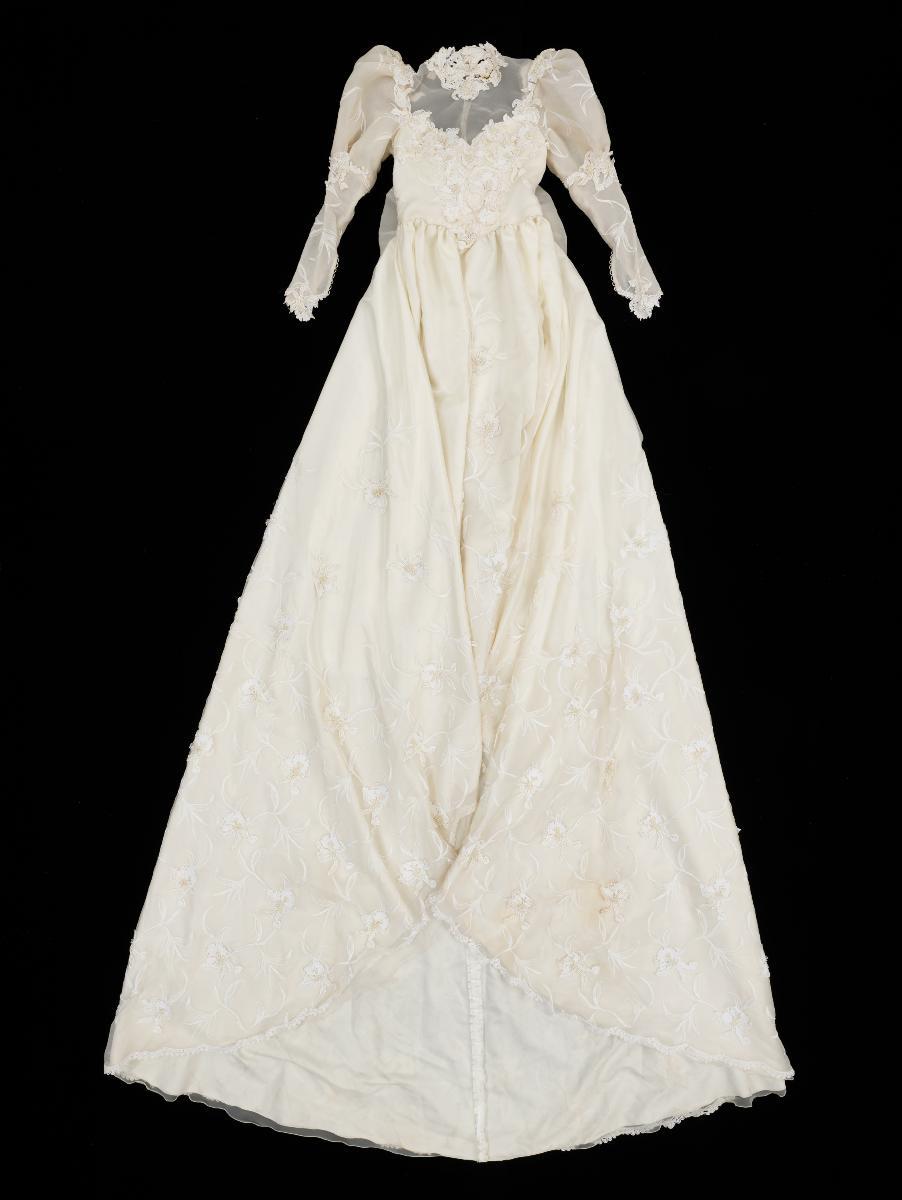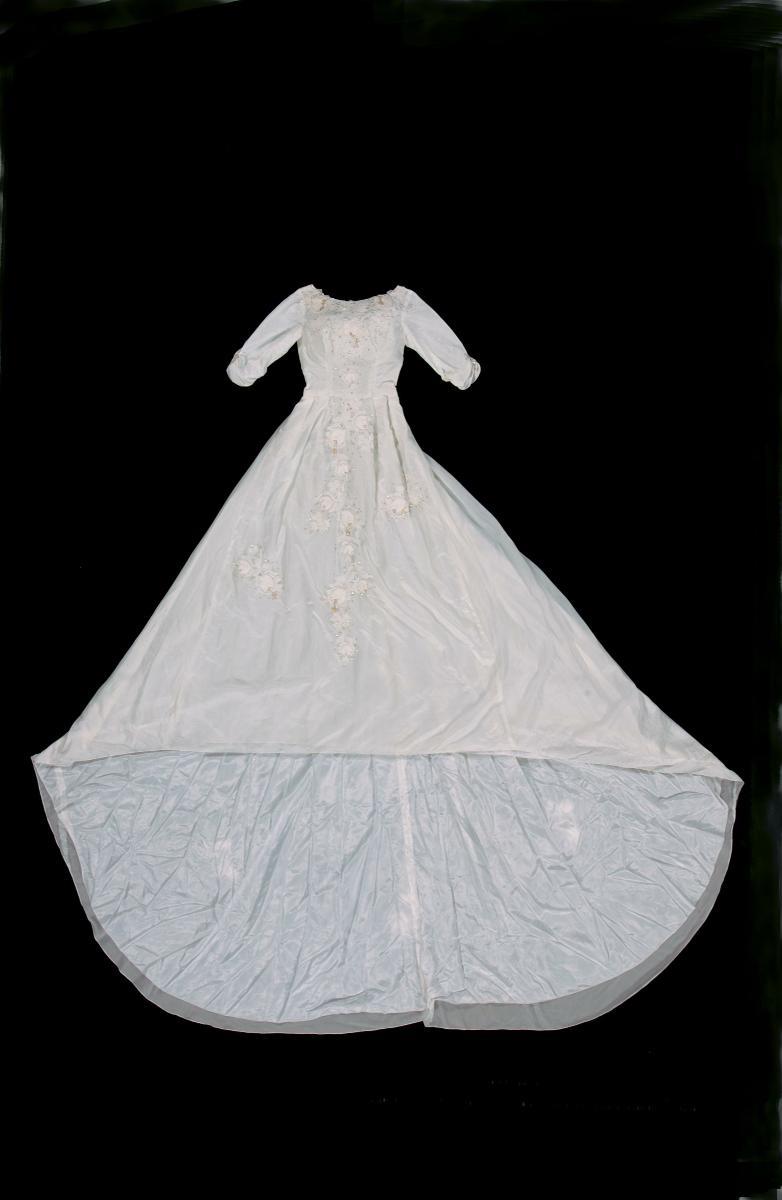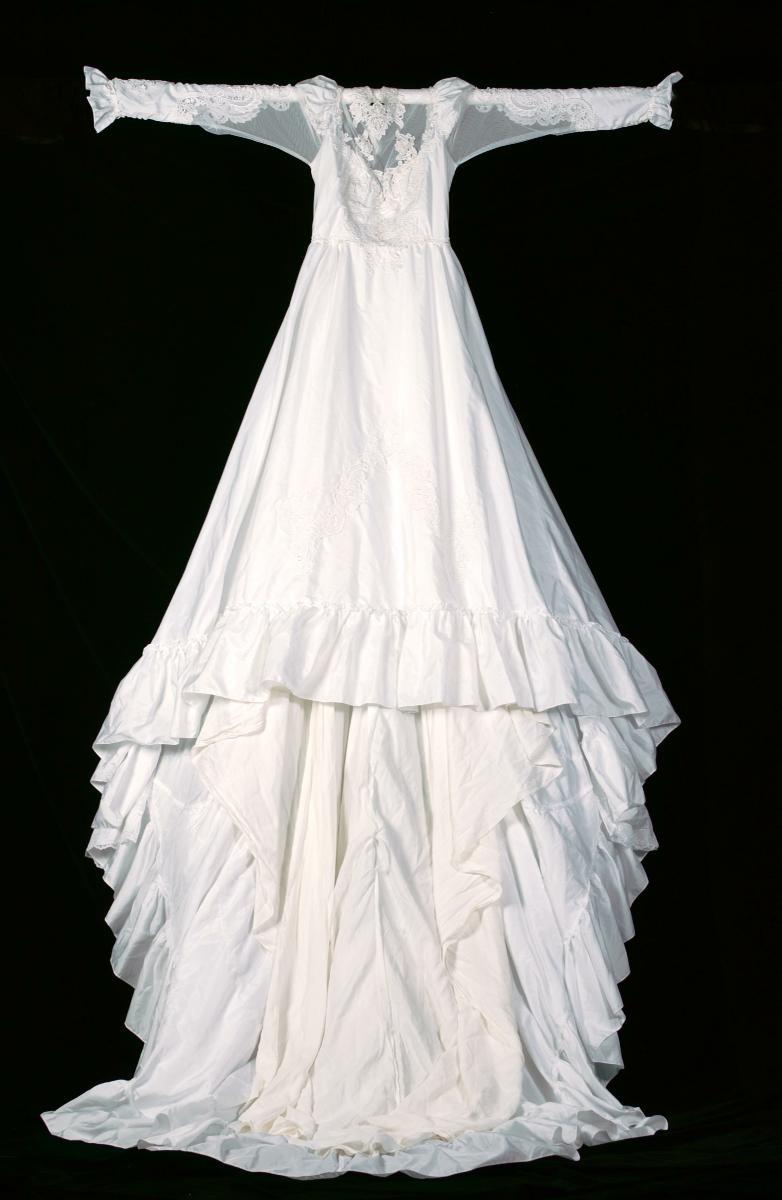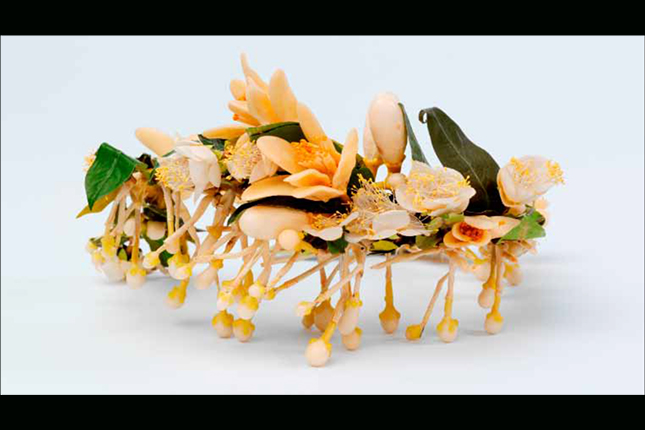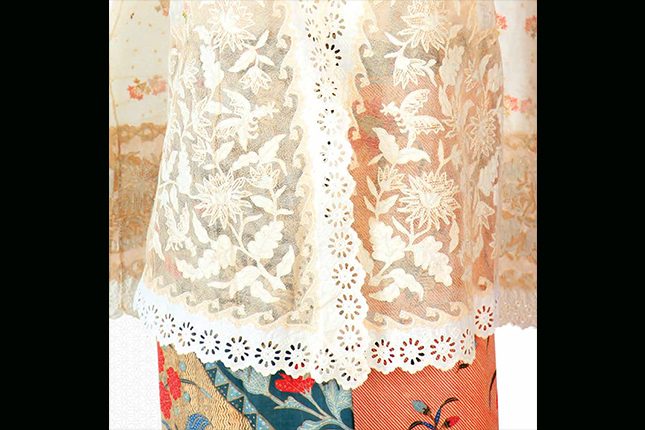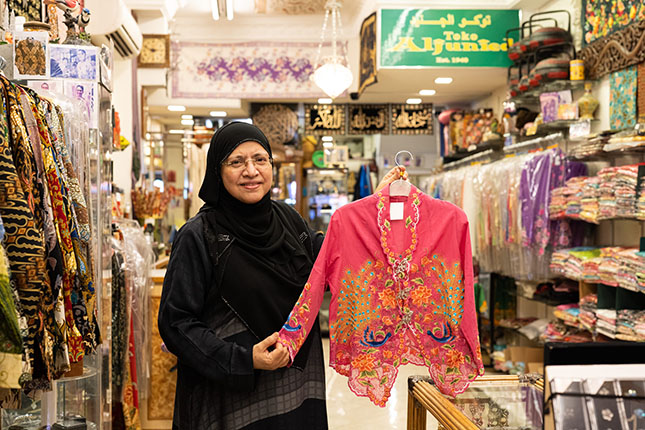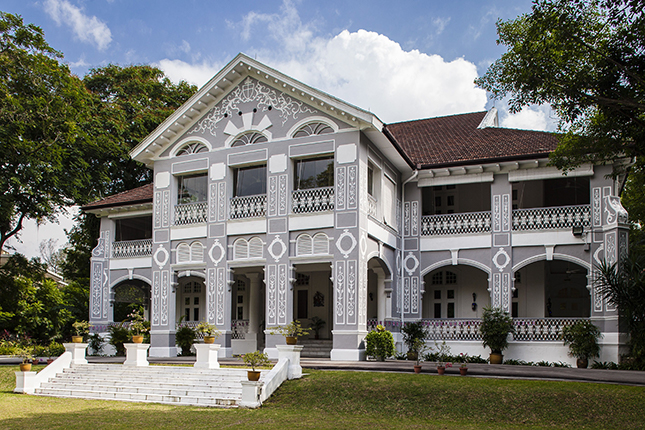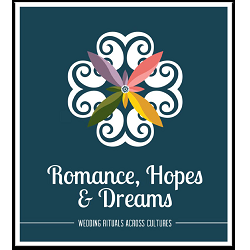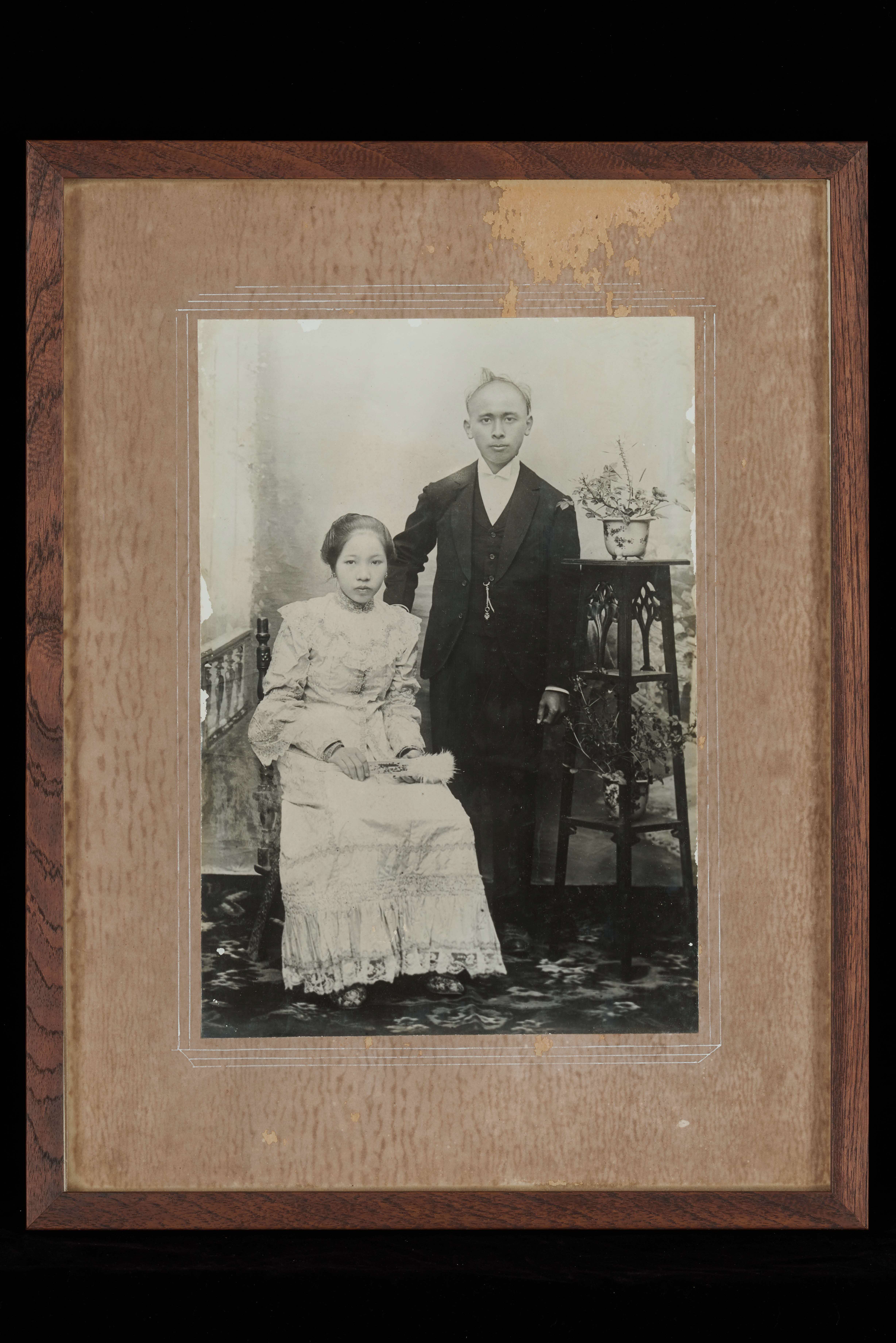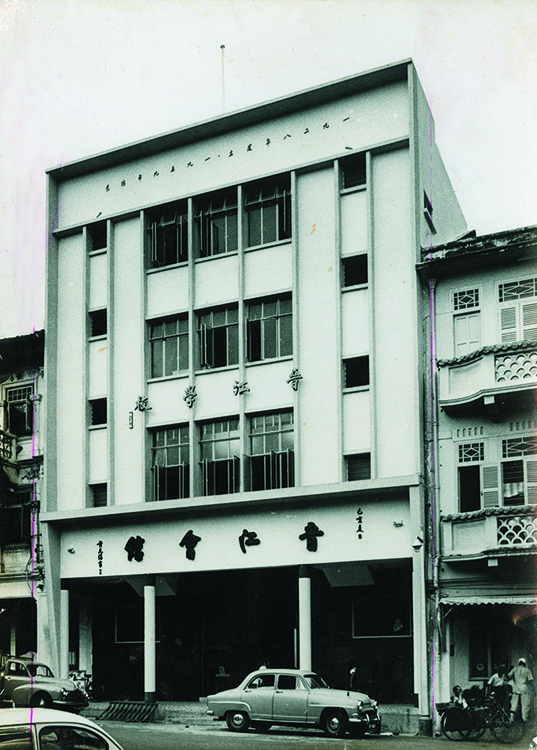This champagne-coloured bridal gown made for the bride Chee Lak Neo shows diversity and change in Peranakan women bridal taste in the mid-20th century. The Western style reflects the anglicised lifestyles and ideas of the Peranakan Chinese in the British Straits Settlements days. Gathers at the midriff create an illusion of volume without using as much fabric as a full skirt. The use of snap button closures at the left bodice, sleeves, and chest meant that putting it on was easy and did not require the help of others. These simple designs show how fashion was influenced by the scarcity of resources in the West and Singapore during wartime. The overall style shows a Peranakan’s modern take on fusing Western fashion with jewelleries that are as elaborate as traditional Peranakan ones.Peranakan weddings were typically elaborate ceremonies that lasted up to twelve days. They involved numerous customs and rituals, such as the tea ceremony on the sohja tiga hari (third day) and presenting the prove of virginity on the duablas hari (twelfth day). Wedding portraits often show the bridegroom in suit and the bride in traditional Peranakan wedding attire. Although more brides adopted Western wedding gowns around the mid-20th century, they could also have a change of traditional outfits for certain events during the wedding. The objects from this group acquisition show how the Peranakan wedding was simplified during wartime, while some traditions were retained.Chee Lak Neo’s father, Chee Guan Chiang was a director at OCBC (1938–1958), while his father Chee Swee Cheng was a prominent businessman in Malacca dealing with plantations and real estate among others.




